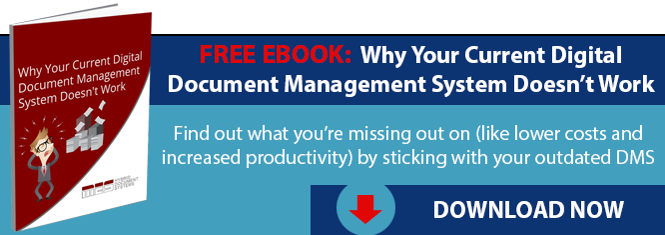
Accounts payable (AP) automation offers a powerful solution for businesses seeking to streamline their financial operations. By automating the AP process, businesses can significantly reduce manual tasks, improve accuracy, and save time. However, only 10% of businesses have fully automated their AP processes.
AP automation is crucial for business owners and managers who seek efficiency and accuracy in their financial workflows. This article explores the top benefits of accounts payable automation, from time-saving and cost-cutting to enhanced security and better cash flow management.
Benefit #1: Save Time and Increase Productivity
One of the most immediate advantages of accounts payable automation is the significant reduction in manual tasks. From invoice receipt to payment, automation streamlines the entire AP process, freeing up employees to concentrate on more strategic tasks rather than labor-intensive manual matching and routine data entry.
Time-Saving Scenarios
Consider the process of invoice matching. Traditionally, matching invoices with purchase orders and delivery receipts can be time-consuming and prone to errors. AP automation completes this process automatically, ensuring all documents are correctly aligned and discrepancies are flagged for review.
Additionally, automated workflows eliminate the need for physical document handling, reducing the time spent filing and retrieving paper invoices. Employees can quickly search and access digital records, facilitating faster approvals and payments.
Benefit #2: Cut Costs and Improve Efficiency
Implementing accounts payable automation brings substantial cost-saving benefits. Businesses can reduce printing, storage, and postage expenses by reducing their reliance on paper. Moreover, automation minimizes the risk of costly errors often occurring with manual data entry, leading to significant financial savings.
Quantifying the Savings
Statistics show that companies adopting accounts payable automation can reduce processing costs by up to 81% and accelerate invoice cycle times by 73%. This is primarily due to decreased manual processing tasks and the elimination of physical document handling.
- Reduced paper use: By transitioning to digital invoices and records, businesses save on the costs associated with printing and storing paper documents.
- Fewer errors: Automated data entry and verification processes reduce the likelihood of errors, which can be costly.
- Statistics to quantify the savings: North American B2B payments total $27 trillion annually. Companies spend $510 billion each year on manual AP costs. The average cost for processing each invoice is nearly $11, which can rise to $25 or more. Manual payment processing costs an estimated $6 per payment. AP automation can reduce AP-related costs by more than 75% and achieve ROI within 3-4 months.
Benefit #3: Optimize Cash Flow Management
Real-time financial data provided by accounts payable automation enables businesses to make more informed decisions about their cash flow. This improved visibility allows for better planning and forecasting, ensuring companies can manage their liquidity more effectively.
Examples of Improved Cash Flow Management
Automated systems provide instant access to financial data, allowing managers to monitor outstanding invoices and payment schedules. This visibility helps prevent late payments and enables businesses to take advantage of early payment discounts, further optimizing cash flow.
Benefit #4: Enhance Accuracy and Reduce Errors
Manual invoice processing is prone to errors, leading to costly financial discrepancies and strained vendor relationships. The average cost for processing each invoice is nearly $11, which can rise to $25 or more. Manual payment processing costs an estimated $6 per payment. Accounts payable automation addresses these issues by enhancing accuracy and minimizing human errors in financial processes.
Common Errors in Manual Processes
Manual data entry often results in duplicate payments, incorrect invoice amounts, and missed deadlines. These errors not only waste time but also require additional resources to rectify.
Accuracy Improvements
Automation ensures that data is consistently and accurately processed, reducing the likelihood of errors. Features such as automated data capture and validation help maintain high levels of accuracy.
- Automated data capture: Automation tools use technologies like OCR to capture invoice data accurately, reducing the need for manual entry.
- Validation processes: Automated systems validate data against predefined rules, ensuring that only correct information is processed.
Benefit #5: Strengthen Security and Ensure Compliance
Protecting sensitive financial data is a critical concern for any business. Accounts payable automation enhances security and ensures compliance with industry standards and regulations by implementing advanced security measures.
Data Protection Technologies
AP automation systems use various technologies to safeguard data. Encryption ensures that information is protected during transmission and storage, preventing unauthorized access. User access controls restrict access to sensitive data, ensuring that only authorized personnel can view or modify financial records.
Ensuring Compliance
Automation helps businesses comply with regulatory requirements by providing thorough documentation and audit trails. These features simplify compliance reporting and ensure that all financial activities are transparent and traceable.
Benefit #6: Streamline Processes and Eliminate Redundancies
Accounts payable automation is crucial to streamlining financial processes and eliminating redundancies. By automating repetitive tasks, businesses can simplify data management and ensure a more efficient workflow.
Eliminating Redundancies
Redundant tasks such as duplicate data entry, manual invoice matching, and extensive paperwork can slow operations and increase the risk of errors. Automation filters out these redundancies by standardizing processes and automating routine tasks.
- Automated workflows: Automated systems streamline approval processes, ensuring invoices are routed to the right personnel without manual intervention.
- Standardized processes: By adopting a standardized approach to data entry and processing, businesses can eliminate inconsistencies and reduce the time spent on repetitive tasks.
Benefit #7: Minimize Errors and Improve Accuracy
Eliminating human errors in financial processes is essential for maintaining the integrity of a company’s financial records. Accounts payable automation is instrumental in achieving this goal by reducing manual intervention and enhancing accuracy.
Importance of Eliminating Human Errors
Human errors such as data entry, duplicate payments, and incorrect invoice details can lead to significant financial discrepancies and inefficiencies. Correcting these errors often requires additional resources, which can be both time-consuming and costly.
Features That Ensure Accuracy
Automation incorporates several features to minimize errors and ensure high accuracy in financial processes.
- Data validation: Automated systems validate data against predefined rules and criteria, ensuring that only accurate and consistent information is processed.
- Error detection: Automation tools can detect and flag anomalies, such as duplicate invoices or mismatched data, allowing for timely corrections.
Addressing Common Concerns
Despite the clear advantages of accounts payable automation, some businesses may have reservations about implementing such systems. Addressing these concerns can help ease the transition and highlight the long-term benefits of AP automation.
- Implementation complexity: Transitioning to an automated system may seem daunting, with fears of disrupting current processes. However, modern AP automation solutions are designed to integrate existing systems seamlessly. Providers often offer comprehensive support and training during implementation, ensuring a smooth transition. User-friendly interfaces and robust customer support ease the setup process, minimizing downtime and disruption.
- Cost of implementation: The initial investment in AP automation might raise concerns, but the long-term benefits outweigh the costs. The efficiency gains and cost savings from reduced processing times and errors typically result in a quick return on investment. In fact, as mentioned, companies can experience up to an 81% reduction in processing costs and a 73% faster processing cycle time.
- Financial data security: Protecting sensitive financial data is crucial for any business. AP automation systems employ state-of-the-art security measures, such as encryption and multi-factor authentication, to safeguard data. Regular security audits further enhance data protection, ensuring that sensitive information remains secure and compliant with industry standards.
Practical Steps to Implement AP Automation
Implementing accounts payable automation can transform your financial processes, but it requires careful planning and execution. Here are some practical steps to help you successfully adopt AP automation:
Steps for Implementing AP Automation
- Assess current processes: Evaluate your existing AP processes to identify inefficiencies and areas that could benefit from automation. This assessment will help you determine your specific requirements.
- Set clear goals: Define what you want to achieve with AP automation, such as reducing processing times, improving accuracy, or enhancing security. Clear goals will guide your implementation strategy.
- Choose the right document management software: Research and select an AP automation solution that meets your needs. Look for features like automatic invoice matching, real-time data updates, and robust security measures.
- Prepare for change management: Communicate the benefits of AP automation to your team and provide training to ensure a smooth transition. Change management is crucial for successful implementation.
- Integrate with existing systems: Ensure the AP automation software integrates seamlessly with your existing accounting and ERP systems. Integration simplifies data flow and minimizes disruption.
- Pilot testing: Start with a pilot program to test the system in a controlled environment. This helps identify potential issues and allows for adjustments before full-scale implementation.
- Monitor and optimize: Continuously monitor the performance of the AP automation system and gather feedback from users. Use this information to make necessary adjustments and optimize the process.
For more detailed guidance, refer to "The Definitive Guide to Accounts Payable Automation."
Conclusion
Accounts payable automation offers numerous benefits that can significantly improve your business operations. From saving time and cutting costs to enhancing accuracy and security, AP automation is a powerful tool for optimizing your financial processes.
By adopting AP automation, businesses can:
- Save time and increase productivity
- Cut costs and boost efficiency
- Optimize cash flow management
- Enhance accuracy and reduce errors
- Strengthen security and ensure compliance
- Streamline processes and eliminate redundancies
- Minimize errors and improve accuracy
Implementing AP automation requires careful planning and the right tools. Following the practical steps outlined in this article can help you successfully transition to an automated system and reap the benefits of enhanced efficiency and accuracy in your accounts payable processes.
Contact MES Ltd. for a free quote and learn more about how accounts payable automation can benefit your business. Visit our website at www.mesltd.ca for additional resources and expert guidance.
